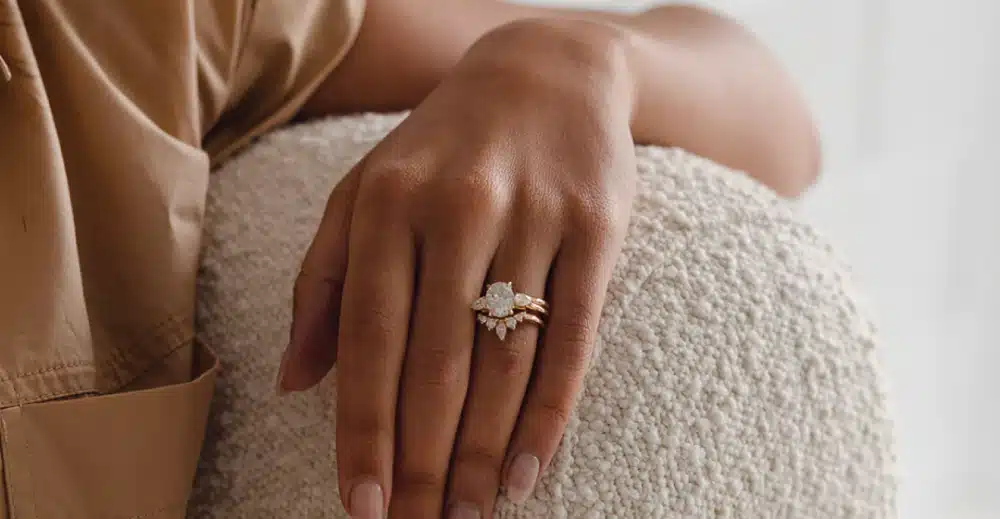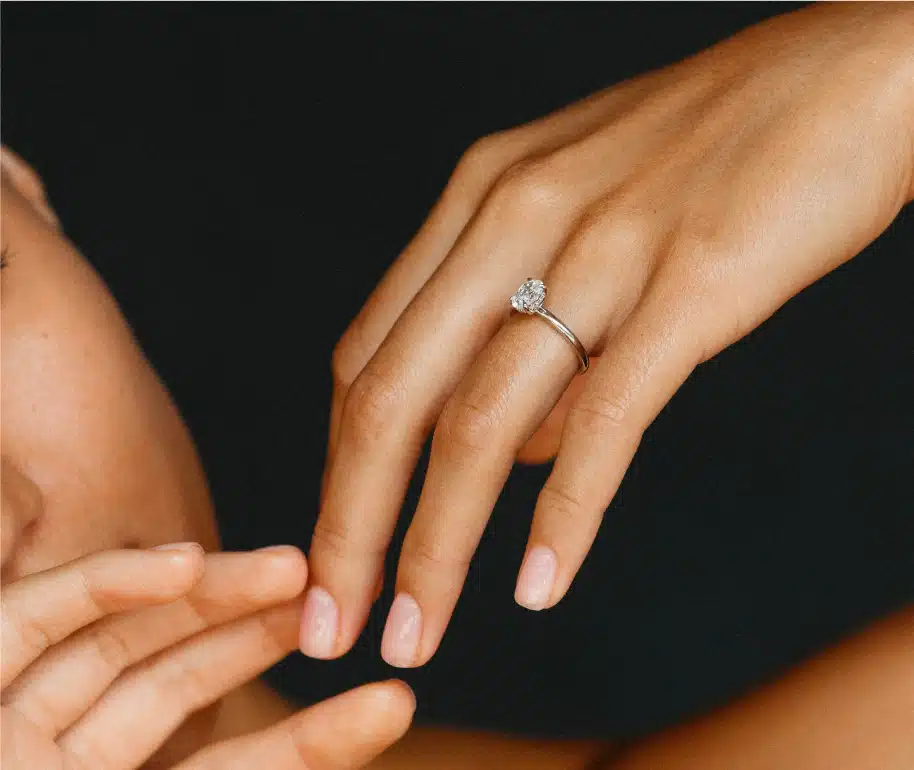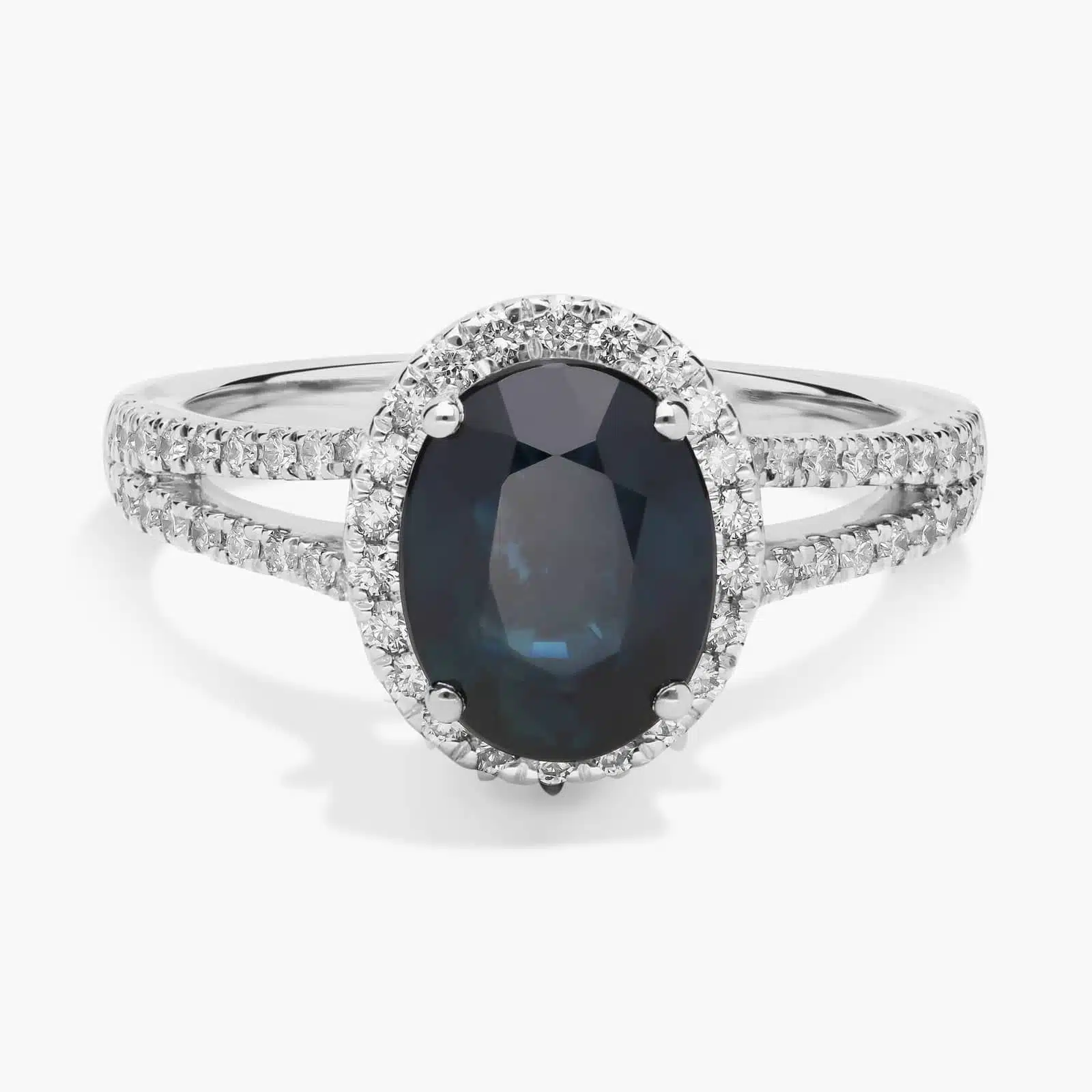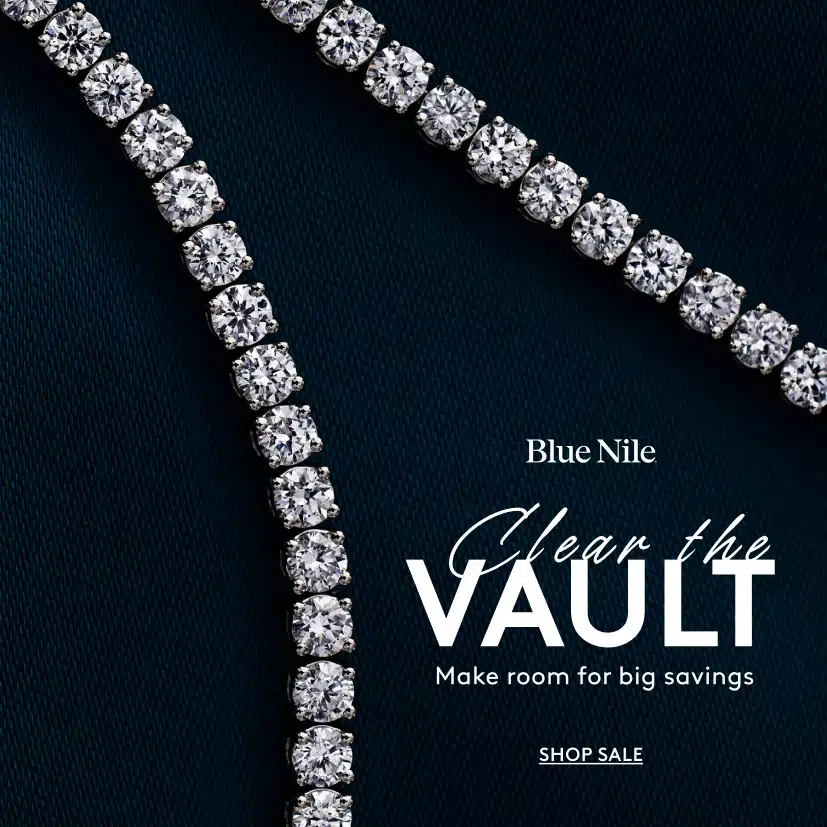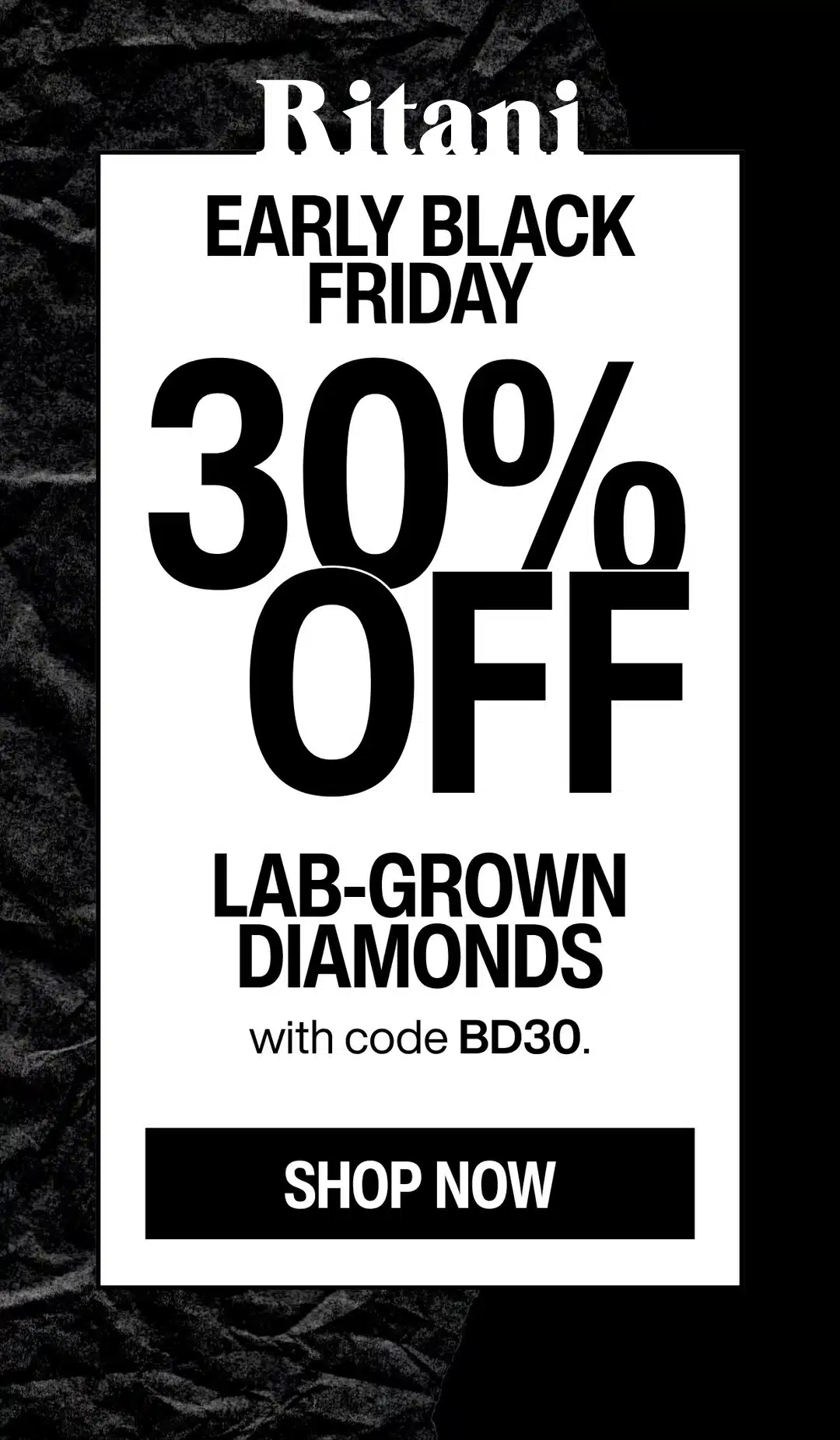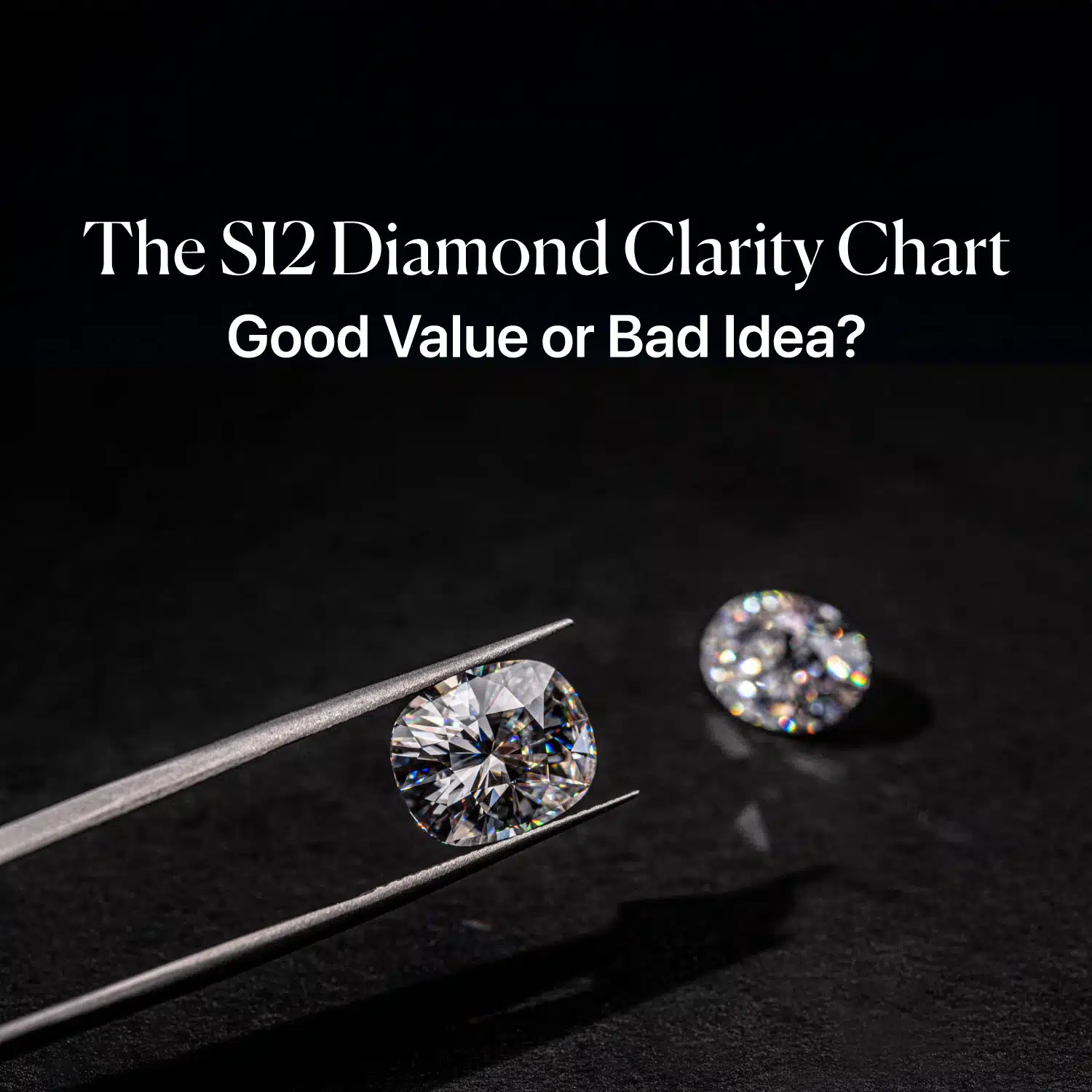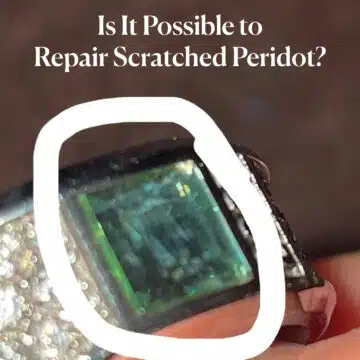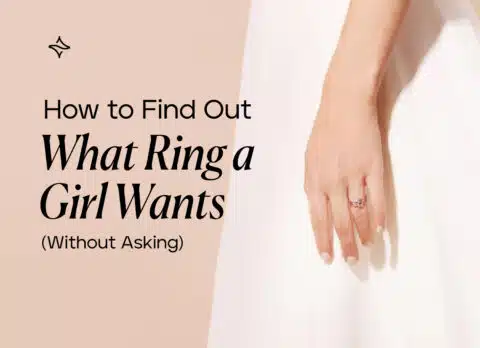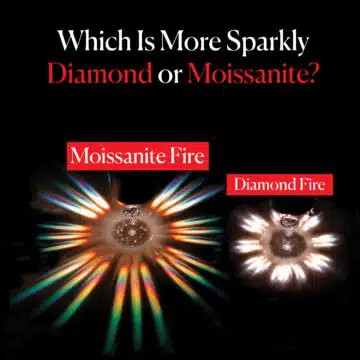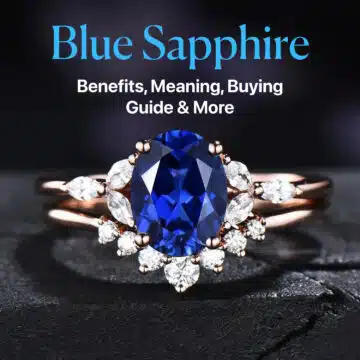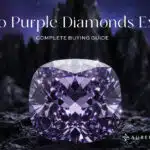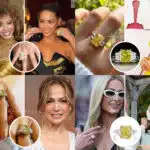Alright, let’s get straight into it. When you’re looking at diamonds, you’ll see a lot of confusing letter-and-number grades. But few cause more debate—and create more opportunity—than SI2.
So, what does SI2 clarity actually mean for your diamond?
On paper, the GIA (the lab that sets the standard for diamond grading) defines SI2 as “Slightly Included 2.” In plain English, this means the diamond has inclusions—tiny imperfections inside the stone—that a professional can easily see under 10x magnification.
But here’s the million-dollar question you actually care about: can you see them with your own eyes?
The honest answer is: sometimes.
And that “sometimes” is exactly where the game is won or lost. An SI2 diamond can be a risky mistake, showing a distracting flaw right in the center of the stone. Or, it can be the savvy buyer’s secret weapon—a diamond that looks perfectly clean to the naked eye but costs significantly less than a technically higher-grade stone.
Finding that beautiful, “eye-clean” SI2 is the key. It’s how you can afford a larger diamond or a better cut without blowing your budget. I’m here to pull back the curtain and show you exactly how to tell the difference, making sure you find the incredible deal and avoid the costly error.
- The Real SI2 Diamond Clarity Chart: What Jewelers Look For (The Good vs. The Bad Inclusions)
- My 4-Step Buying Guide to Finding a Flawless-Looking SI2 Diamond
- SI2 vs. The Neighbors: A Head-to-Head Comparison with SI1 and I1
- My Final Verdict: Should You Buy an SI2 Diamond?
- Your SI2 Diamond Questions, Answered
Diamond IQ Test: Natural or Lab-Grown?
Two identical diamonds: GIA Certified, 1.51ct, D Color, VVS1, Ideal Cut. One is natural ($16,530), the other is lab-grown ($2,390). Choose the diamond you like better and see if you can match it to its origin.
The Real SI2 Diamond Clarity Chart: What Jewelers Look For (The Good vs. The Bad Inclusions)
Forget the generic charts you’ve seen online that just show a scale from “Flawless” down to “Included.” Those charts are fine for a basic definition, but they are practically useless when you’re trying to make a smart buying decision in the SI2 category.
Why? Because any diamond with the right number and size of inclusions can get an SI2 grade on paper. But the real story—the one that determines if a diamond is a beautiful value or a dud—isn’t about the grade itself. It’s about the specific type, color, and location of those inclusions.
To really understand the challenge—and the opportunity—let’s look at the numbers. Based on my years of evaluating thousands of these stones, here’s the reality you’re facing when looking at a random selection of SI2 diamonds:
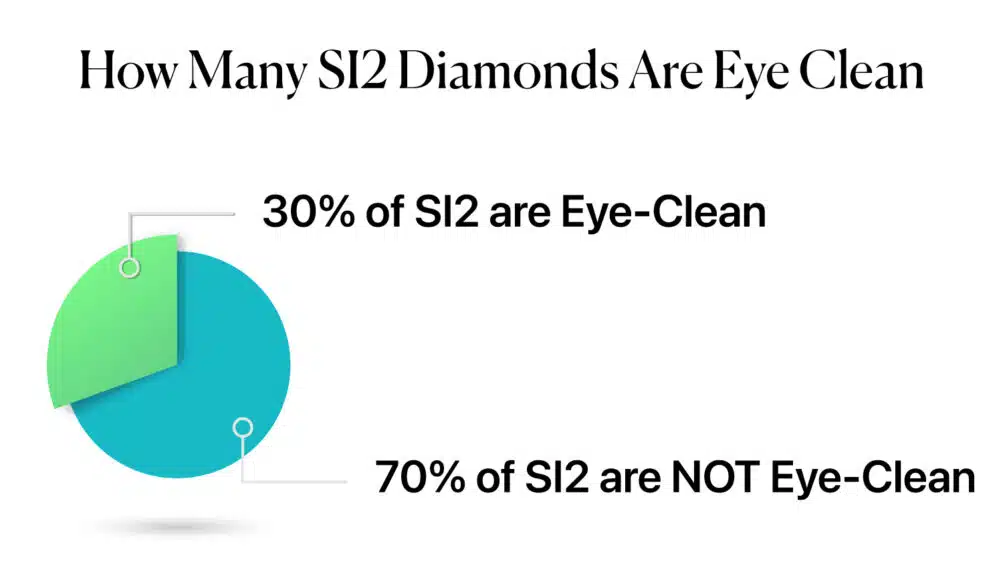
When I’m evaluating an SI2 diamond for a client, I’m not just looking for flaws; I’m hunting for specific kinds of flaws. Some are harmless and can be easily ignored or even hidden, making the diamond an incredible find. Others are dealbreakers that instantly kill a stone’s beauty and value, no matter the price.
This is the real clarity chart—the mental checklist that experienced jewelers use. Let’s break it down.
The ‘Good’ Inclusions: Your Best Friends for Finding Value
When I say an inclusion is “good,” I mean it’s not a threat to the diamond’s beauty or structural integrity. These are the characteristics you should actively look for in an SI2 stone because they allow the diamond to get the lower price grade without sacrificing the look you want.
It’s easier to understand this when you see it in practice. Here is a perfect example of what I consider a “good” SI2 diamond. This is Excellent cut, F Color 1.26 Carat Round Diamond from Blue Nile.
Notice how the few small inclusions are positioned away from the center, where they won’t be easily noticed and won’t disrupt the sparkle.
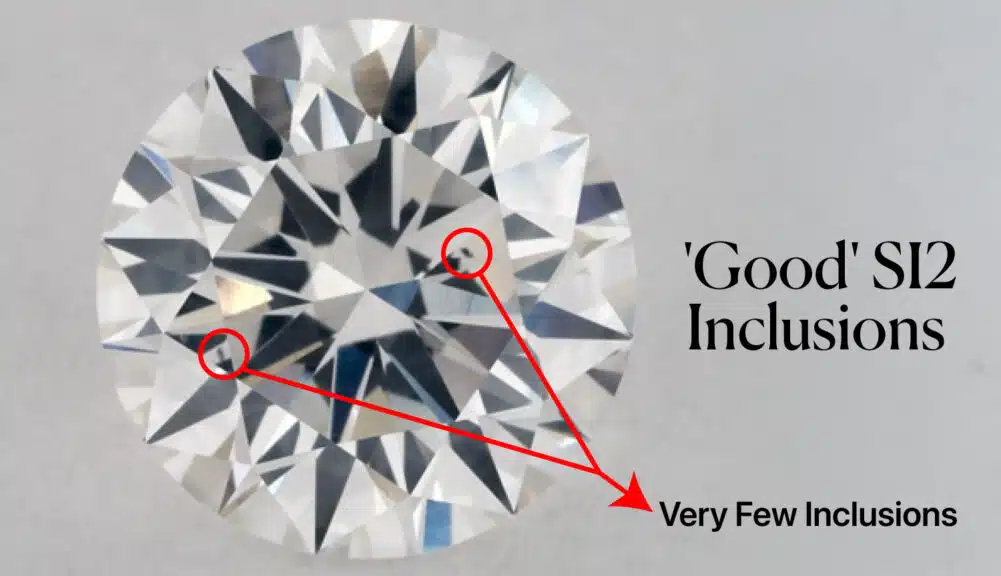
1. Small, Transparent, or White Inclusions
The visibility of a flaw is all about contrast. A black speck on a white background jumps out at you. A white speck on a white background? Much harder to spot. The same is true in diamonds.
- White Feathers: A “feather” is a trade term for a small internal fracture. While the word “fracture” sounds scary, most feathers are completely contained within the diamond and pose no threat to its durability.
When they are small and transparent or whitish, they blend seamlessly into the diamond’s complex pattern of facets and sparkle. They are often impossible to locate without magnification. - Pinpoints: These are tiny crystals within the diamond—often so small they just look like a tiny dot under 10x magnification. A few scattered white or transparent pinpoints are completely harmless and are the most common type of inclusion in any diamond.
In an SI2, you want to see these over a single, large, dark crystal any day of the week. - Clouds: A cloud isn’t a single inclusion, but rather a dense grouping of minuscule pinpoints. A small, hazy cloud is often no issue at all. It can be completely invisible to the naked eye and won’t impact the stone’s brilliance. The danger, which we’ll discuss later, is a large, dense cloud.
DIAMOND ON SALE!!
⏰ Tick-Tock! The Best Diamond Deals at James Allen Are Disappearing Fast!
2. Location is Everything: The Art of Hiding Flaws
This is probably the single most important lesson I can teach you about buying an SI2 diamond: A flaw is only a problem if you can see it. The location of an inclusion is often more important than its size or type.
- Near the Girdle (The Edge): This is the sweet spot. An inclusion located near the outer edge of the diamond is the ideal scenario for an SI2.
Why? Because it can almost always be strategically covered by a prong when the diamond is set in a ring. A small black crystal near the edge that gets hidden by a prong is infinitely better than a “better” white feather that’s sitting right in the middle of the stone.
This is the ultimate trick for getting a diamond that looks flawless once it’s in the setting. - Deep in the Pavilion (The Underside): Inclusions hidden deep within the diamond’s pavilion (the conical bottom part) can also be excellent candidates.
The brilliant faceting in this area is designed to chop up and reflect light, and that same effect can help break up and disguise an inclusion, making it very difficult to spot from the face-up view.
When you find an SI2 where the main grading inclusions are white, off to the side, and can be hidden by a prong, you’ve found a top-tier SI2. This is the stone that will look identical to a VS2 but for a fraction of the price.
The ‘Bad’ Inclusions: Red Flags to Avoid at All Costs
Now for the other side of the coin. These are the characteristics that I consider immediate dealbreakers. If I see any of these in a prominent position on an SI2 diamond, I advise my clients to walk away, no matter how attractive the price seems.
Now, let’s look at the other side of the coin. This next image is a perfect illustration of a ‘bad’ SI2—a stone I would immediately tell a client to reject. On paper, it’s an SI2 with an excellent cut and good color, just like the ‘good’ one. But one look tells you the whole story.
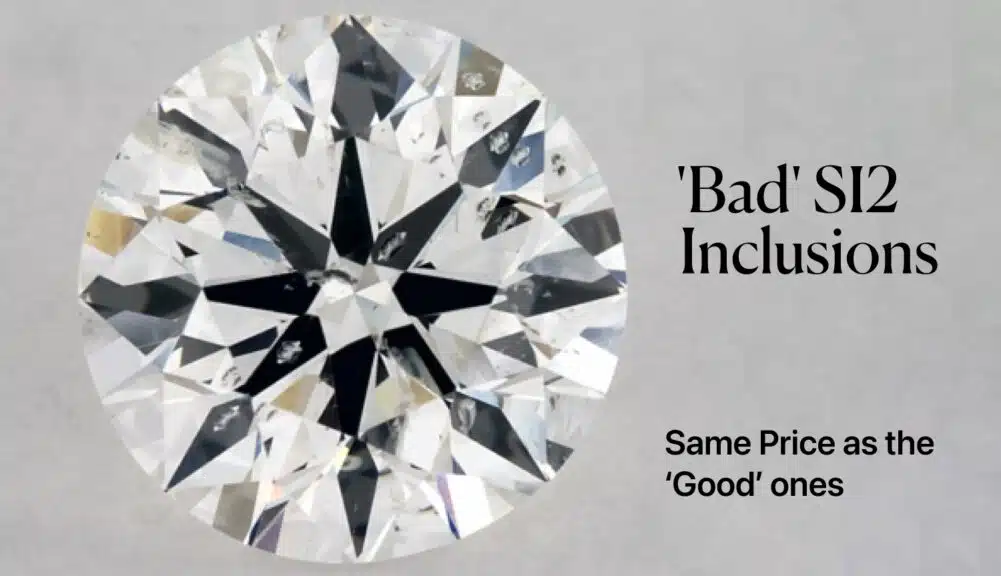
1. The #1 Dealbreaker: A Large, Dark Crystal Under the Table
This is the cardinal sin of SI2 diamonds. The “table” is the large, flat facet on the very top of the diamond—it’s the main window into the stone.
- Black Crystals (Carbon Spots): A black inclusion, often a speck of carbon that didn’t fully crystallize, creates the highest possible contrast. Your eye will be drawn to it like a magnet every single time you look at the ring.
A noticeable black spot right in the center of the table is impossible to ignore and, in my opinion, ruins the magic of the diamond. It doesn’t matter how well the diamond is cut or how big it is; you will always see that flaw first.
2. Inclusions That Threaten Durability
A diamond is the hardest natural substance on earth, but it’s not indestructible. Certain inclusions can compromise its structural integrity, making it more prone to chipping or breaking over time.
- Chips or Cavities on the Surface: A “chip” is exactly what it sounds like—a piece that has broken off, usually on the girdle. A “cavity” is a pit or opening on the surface of the diamond. These are red flags because they are points of weakness.
A cavity can also trap dirt and oil, making it appear as a dark spot that’s difficult to clean. I almost always reject stones with significant surface-reaching flaws. - Large Feathers Reaching the Surface: While most feathers are harmless, a large feather that breaks through the surface of the diamond (especially near the girdle or a corner point on a fancy shape) can pose a durability risk. You can check for this on the GIA report’s plot diagram.
3. The Wrong Location: Flaws in the Center
We talked about how a great location can hide a flaw. A bad location will broadcast it. Any significant, eye-visible inclusion—even a white one—that is located directly under the table facet is a problem.
This central location makes the flaw incredibly obvious and can even be reflected by the pavilion facets, creating the illusion of multiple flaws.
We talked about how a great location can hide a flaw. A bad location will broadcast it. Look at this diamond below. On paper, it has incredible specs—it’s a 1.28 carat, G color, Excellent cut SI2 stone. But because of where the flaws are, it’s a definite ‘no’ from me.
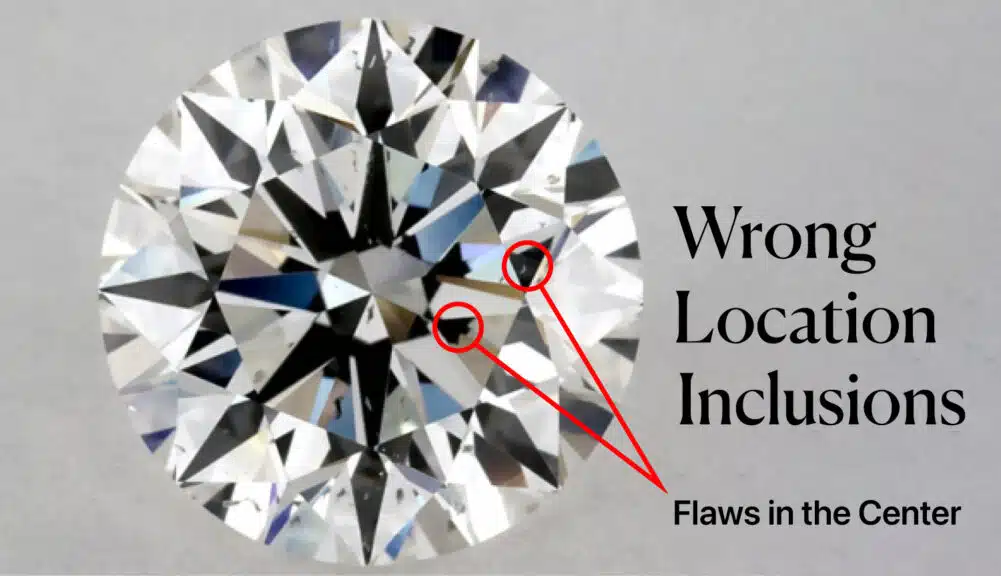
Here is a simple table to summarize the “mental chart” I use:
| Feature | The “Good” SI2 (Seek This Out) | The “Bad” SI2 (Avoid This) | Why It Matters To You |
| Type & Color | White Feathers, Transparent Pinpoints, Small Clouds | Black Crystals, Large Dark Needles | Low-contrast flaws blend in. High-contrast (black) flaws stand out and are distracting. |
| Location | Near the girdle (edge), deep in the pavilion (bottom) | Directly under the table (center), near a corner point | Flaws on the edge can be hidden by prongs. Flaws in the center are the first thing you see. |
| Surface | Clean, no surface-reaching flaws | Cavities, Chips, Knots that break the surface | Surface flaws can trap dirt and, more importantly, create a weak point that compromises the diamond’s durability. |
| Overall Look | Appears “eye-clean” from a normal viewing distance | A visible, distracting spot that draws the eye | The goal is a diamond that looks flawless in a real-world setting, giving you incredible visual value for your money. |
Trust me on this: taking the time to hunt for a “good” SI2 is one of the most effective ways to maximize your budget. You just have to be patient and evaluate the diamond based on what you can actually see, not just what a piece of paper tells you.
Best Deal Of The Year – Final Days
Blue Nile’s “Clear The Vault” is ON.
Shop Fine Jewelry Upto 70% OFF.
*Exclusions may apply. See Blue Nile for complete details.
Is an SI2 Diamond Right for You? A Quick Verdict
| You should consider an SI2 if… | You should probably choose SI1 or VS2 if… |
| ✅ You want the biggest possible diamond for your budget. | ❌ You want guaranteed eye-clean quality with no “homework.” |
| ✅ You are a savvy shopper willing to inspect videos. | ❌ The idea of hunting for a good stone causes you stress. |
| ✅ You are choosing a Brilliant cut (like Round or Oval). | ❌ You have your heart set on a Step cut (like Emerald or Asscher). |
| ✅ You understand that a hidden flaw saves you real money. | ❌ You prefer paying a premium for peace of mind. |
My 4-Step Buying Guide to Finding a Flawless-Looking SI2 Diamond
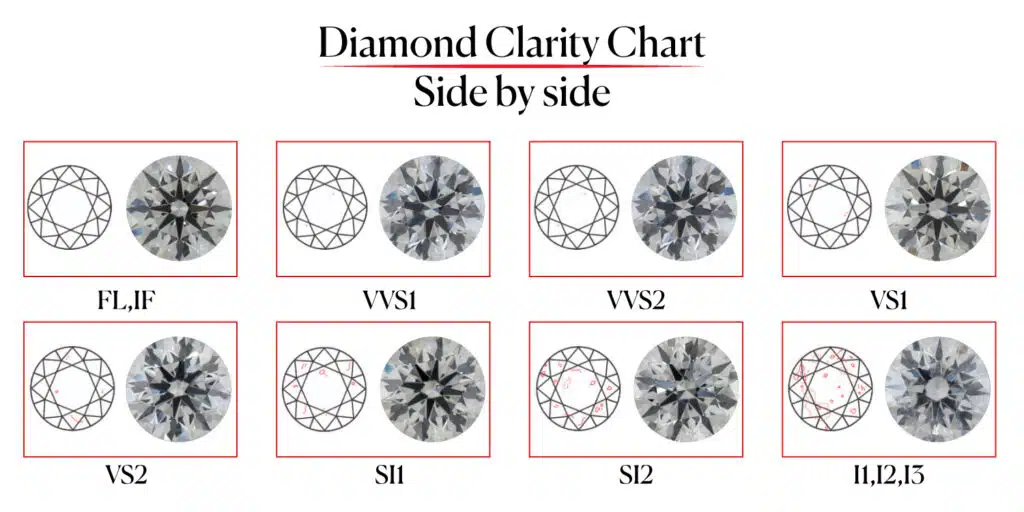
Finding a beautiful, eye-clean SI2 diamond isn’t about getting lucky; it’s about having a system. This isn’t some complicated industry secret; it’s a straightforward process of knowing exactly what to look for and what to prioritize.
This is my personal 3-step process that I walk every client through. Follow it, and I promise you’ll dramatically increase your chances of finding a stone that delivers the look of a VS-grade diamond for an SI-grade price.
Step 1: Your Diamond’s Shape is Your Secret Weapon
Before you even look at a single diamond, you need to understand that your choice of shape is the most powerful tool you have. Different diamond shapes handle inclusions in vastly different ways because of how their facets are arranged. Some shapes are masters of disguise, while others are brutally honest.
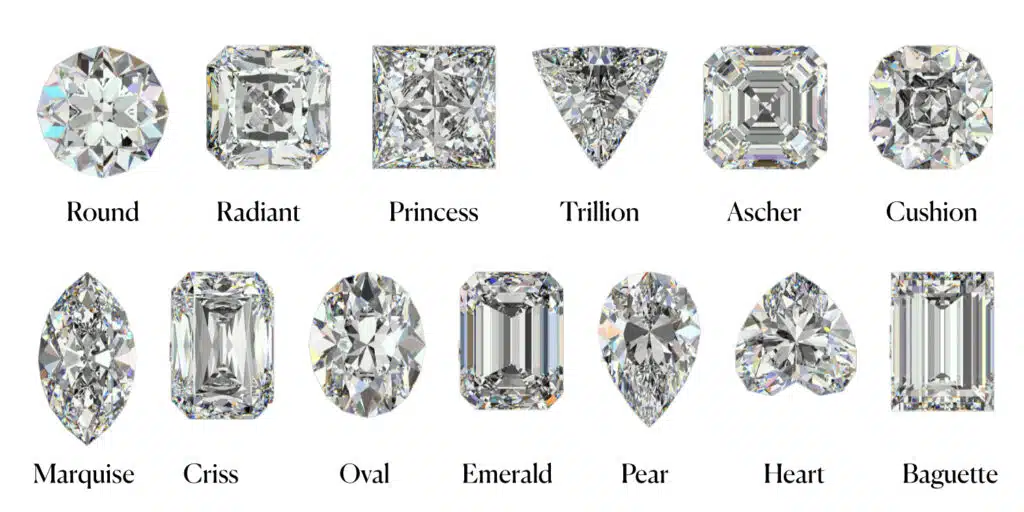
- Best Bets (The Brilliant Cuts): If you’re set on an SI2, these shapes should be at the top of your list. Their facet patterns are specifically designed to maximize sparkle and fire, and that explosion of light is fantastic at masking small inclusions.
- Round Brilliant: This is the undisputed champion. With its 58 precisely arranged facets, the Round Brilliant cut produces so much sparkle and light return that it can make minor inclusions virtually disappear. It offers the best chance of finding an eye-clean SI2.
- Oval, Cushion, Radiant, and Princess Cuts: These shapes are also part of the “brilliant” family. Their faceting styles create a “crushed ice” look that is incredibly effective at scattering light and hiding imperfections. They are all excellent choices for an SI2 clarity diamond.
- Round Brilliant: This is the undisputed champion. With its 58 precisely arranged facets, the Round Brilliant cut produces so much sparkle and light return that it can make minor inclusions virtually disappear. It offers the best chance of finding an eye-clean SI2.
- Use Caution (The Step Cuts): I want to be very direct here. If you love the look of these shapes, you should strongly consider budgeting for a higher clarity grade (like VS2 or higher).
- Emerald and Asscher Cuts: These shapes are known as “step cuts.” Instead of brilliant facets, they have long, linear facets that create a “hall of mirrors” effect. They are like looking through a clear, calm window into the heart of the stone.
There is no sparkle to hide behind. Any inclusion, especially one in the middle of the stone, will be put on full display. Finding an eye-clean SI2 Emerald or Asscher cut is incredibly rare, and I almost never recommend it.
- Emerald and Asscher Cuts: These shapes are known as “step cuts.” Instead of brilliant facets, they have long, linear facets that create a “hall of mirrors” effect. They are like looking through a clear, calm window into the heart of the stone.
James Allen: Our 5-Star Choice for Price and Selection
Check our comprehensive James Allen Review to learn more about their pricing and commitment.
Step 2: Location, Location, Location (of the Flaw!)
Once you’ve chosen a forgiving shape, it’s time to analyze the inclusions themselves. As we discussed, a flaw is only a problem if you can see it. Your mission is to find a diamond where the primary inclusions are tucked away out of sight.
Here’s how to put this into action:
- Check the Report’s Plot Map: Before you even look at the diamond, pull up its GIA report. Look at the diagram (the “plot”) that maps out the inclusions.
Do you see a symbol for a black crystal right in the center of the table facet? If so, you can probably reject that stone immediately and save yourself the time. - Hunt for Flaws on the Perimeter: Are the main inclusions plotted near the edge of the stone (the girdle)? This is what you want to see. These are your prime candidates.
- Ask the Golden Question: Look at the diamond (or its video) and the plot map together and ask yourself: “Could a prong cover this?” If the main flaw is a small feather or crystal near the edge at the 2, 4, 8, or 10 o’clock position (where prongs typically sit), you have likely found a winner.
This single trick is how you get a diamond that will look completely clean once it’s set in a ring.
Step 3: The Video Doesn’t Lie: Insist on High-Quality Imagery
This last step is the most critical of all, especially when buying online. In today’s market, there is zero reason to buy an SI2 diamond without first seeing it up close.
Trust me on this: a grading report alone is not enough for an SI2. It is non-negotiable.
A report tells you the clinical facts—the type and general location of a flaw. But it cannot tell you what that flaw actually looks like. It can’t tell you if a feather is transparent and invisible or milky and obvious. It can’t tell you if a black crystal is a tiny speck or a distracting blob.
A high-definition, 360-degree video is the only tool that can. It is your personal jeweler’s loupe. When you’re reviewing a video, here’s exactly what to do:
- Rock the Diamond: Watch as the diamond rotates and tilts. Does an inclusion appear and disappear, or is it visible from every angle?
- Look for the ‘Wink’: A “good” SI2 inclusion will often be invisible from most angles. A “bad” one will “wink” at you—a flash of darkness or whiteness that catches your eye as the stone moves. If you see a distracting wink, move on. There are other stones.
- Check for Haziness: Pay attention to the overall life of the diamond. Does it look crisp and brilliant, or slightly foggy and sleepy? A hazy appearance could be a sign of heavy clouding that, while not a single major flaw, hurts the diamond’s ability to sparkle.
Buying an SI2 is a treasure hunt. By using this three-step system—choosing the right shape, scrutinizing the flaw’s location, and demanding clear video—you put all the power back in your hands. You’re no longer guessing; you’re making an educated decision to get the absolute most for your money.
Read Our 5-Star Blue Nile Review
Check our comprehensive Blue Nile review to learn why we rated Blue Nile 5 stars for their exceptional quality and value.
Step 4 (The Safety Net): Only Shop with a Rock-Solid Return Policy
Let me be crystal clear: even with all this knowledge, you should never buy a diamond online unless the vendor has a no-questions-asked return policy of at least 14-30 days.
This is your ultimate safety net. Reputable sellers like James Allen and Blue Nile offer this because they are confident in their inventory. It allows you to see the diamond in person.
If for any reason you feel you made the wrong choice, you can send it back. This removes all the risk and makes your hunt for that perfect SI2 a confident one.
SI2 vs. The Neighbors: A Head-to-Head Comparison with SI1 and I1
Okay, so you understand what a “good” and “bad” SI2 looks like, and you have a game plan for hunting one down. But the big question remains: is it the right choice for you? To answer that, you have to look at the neighbors—what happens if you spend a little more for an SI1, or try to save a little more with an I1?
This is where your personal comfort level with risk and your budget really come into play. Let’s break down the real-world difference, because the gap in beauty and value between these three grades is huge.
SI2 vs. SI1: Is the Extra Money for an SI1 Worth It?
On paper, the difference is simple: SI1 stands for “Slightly Included 1,” and its inclusions are less significant (smaller, less numerous, or less noticeable) than in an SI2. In reality, the difference is about one thing: peace of mind.
Talk is cheap, so let’s look at a real-world example. Below are two diamonds that are nearly identical in size and have excellent cut grades. Can you spot the visual difference that makes one cost 15-20% more than the other?
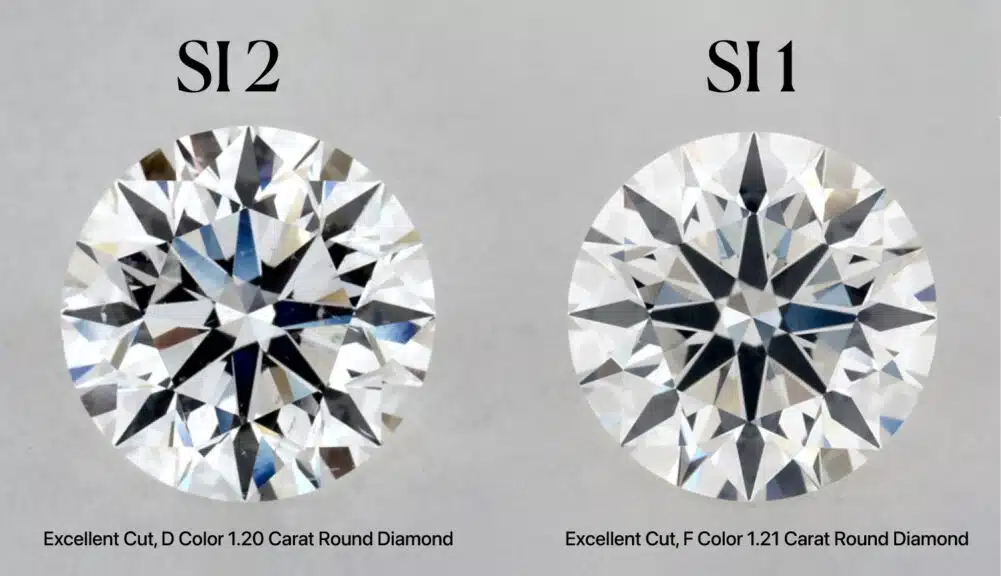
With an SI1 clarity diamond, it is highly likely that the stone will be “eye-clean.” With an SI2, it’s only possible. An SI1 is the safer bet. You’re paying a premium for the near-certainty that you won’t have to do as much homework.
Let’s look at a quick example. Imagine you’re browsing Blue Nile or James Allen for a 1.0-carat, G-color, Excellent-cut round diamond. You might see prices like this:
- A top-tier, eye-clean SI2 Diamond: Might cost around $4,500.
- A standard, eye-clean SI1 Diamond: Might cost around $5,200.
That’s a $700 difference, often a 10-20% price jump. The key insight is that a top-tier SI2 can look visually identical to a lower-tier SI1. Here’s a table to simplify your decision:
Comparison: SI2 vs. SI1 Diamonds
| Feature | SI1 (The Safe Bet) | SI2 (The Value Hunt) |
| Core Concept | Paying a premium for peace of mind and convenience. | Hunting for value to maximize your budget. |
| “Eye-Clean” Chance | Almost always eye-clean, especially in brilliant cuts. | Possible to find, but requires careful inspection. |
| Effort Required | Minimal homework needed. You can largely trust the grade. | High level of homework needed. You must review HD videos and plot maps. |
| Price Point | 10-20% higher than a comparable SI2. | Significant savings over an SI1. |
| Best For… | The buyer who values certainty and wants to minimize risk. | The savvy buyer willing to do the work to get a larger or better-cut stone. |
| My Verdict | A great, safe choice if your budget allows. | The smartest buy in diamonds if you find a good one. |
Ultimately, the extra money for an SI1 is worth it if you want that guarantee. But if you’re a value-hunter, a carefully selected SI2 is where the real magic happens.
SI2 vs. I1: Why This is a Line You Shouldn’t Cross
Now, let’s look in the other direction. If SI2 is a value hunt, is I1 the ultimate treasure map?
I want to be very direct here: for almost everyone buying a diamond for an engagement ring, the I1 clarity grade is a line you shouldn’t cross. The name “I1” stands for “Included 1,” and the definition is critical: these diamonds have inclusions that are often visible to the naked eye.
The entire game changes. With SI2, you are hunting for a stone that looks flawless. With I1, you are accepting a stone that has a visible flaw.
The price can be tempting. That same 1.0-carat diamond on James Allen might have an I1 version for just $3,600. But you are not getting a deal. You are paying less because the diamond has a noticeable flaw—like a black spot in the center or a hazy appearance—that has been priced in.
Here’s why I strongly advise against it:
Comparison: SI2 vs. I1 Diamonds
| Feature | SI2 (The Last Stop for Value) | I1 (The Danger Zone) |
| Visibility of Flaws | Flaws are often invisible to the naked eye. | Flaws are often visible and distracting to the naked eye. |
| Impact on Beauty | A good SI2 has no impact on sparkle or visual appeal. | Flaws can make the stone look dull, hazy, or dirty. |
| Durability Risk | Generally low. Flaws are typically contained within the stone. | Can be higher, as flaws are larger and more likely to reach the surface. |
| The “Deal” | The best way to maximize your budget without sacrificing beauty. | A “price trap.” The low price reflects a genuine and visible deficit in quality. |
| My Verdict | The lowest clarity I recommend for an engagement ring. | Avoid. The risk of getting a visibly flawed diamond is far too high. |
Your diamond should be a source of pride. The last thing you want is for the first thing anyone notices to be a flaw. Stick to the savvy hunt for a great SI2, and leave the I1 category and its false promises behind.
My Final Verdict: Should You Buy an SI2 Diamond?
So, after all of this, what’s the bottom line? Should an SI2 diamond be on your list?
Let’s not mince words: an SI2 diamond isn’t for everyone. It’s not the right choice for the buyer who wants a simple, hands-off experience.
If you want an absolute guarantee of an eye-clean stone with zero homework—if you want to just pick a grade and know it will be beautiful—then I would guide you toward a VS2 or a solid SI1 diamond. You’ll pay a bit more for that peace of mind, and there is absolutely nothing wrong with that choice. It’s the safe, reliable path.
But…
If you’re a savvy shopper; if you’ve read this guide and feel empowered; if you’re willing to follow the steps we’ve outlined and do the “work” of analyzing videos and plot maps…
And if you want to maximize your budget to get a larger diamond, a higher color grade, or a more spectacular cut than you thought you could afford?
Then an eye-clean SI2 diamond isn’t just a good value; it’s one of the smartest buys in the entire diamond world.
Finding that perfect SI2—the one with harmless inclusions tucked away at the edge, the one that looks identical to a VS stone once it’s on your finger—is your reward for being an educated consumer. You’re not just buying a diamond; you’re buying it smarter than 90% of other people.
You’ve learned to look past the simple label on the SI2 diamond clarity chart and see the real beauty and value within.
That isn’t just a good deal. That’s a win.
A Note on Carat Size: Does it Matter for SI2?
Yes, it absolutely matters. An inclusion that’s completely invisible in a 0.90-carat diamond might become noticeable in a 2.5-carat diamond, simply because the table facet is so much larger. As a rule of thumb, the larger the diamond (especially over 1.75 carats), the more carefully you need to scrutinize SI2 candidates.
For larger stones, stepping up to an SI1 might be the safer path to ensuring an eye-clean look.
Your SI2 Diamond Questions, Answered
I get these questions all the time from clients trying to navigate the complexities of diamond clarity. It’s an area where a little bit of knowledge goes a long way. Let’s tackle the most common questions one by one with some straight answers.
James Allen is a top leader in online diamond sales, offering cutting-edge imaging technology that lets you inspect diamonds as if you were using a jeweler's loupe. With the largest exclusive selection of loose diamonds available online and excellent pricing, they also boast one of the finest collections of lab-created diamonds on the market. They currently run a 25% discount on selected lab-grown diamonds!
WHAT WE LOVE ABOUT THEM:
- 30-day no-questions-asked return policy, with a prepaid shipping label provided by James Allen.
- Lifetime warranty on all purchases.
- Free international shipping.
- Complimentary prong tightening, repolishing, rhodium plating, and cleaning every six months.
- Insurance appraisals included with purchases.
- One free resizing within 60 days of purchase.
- Free ring inscriptions available.
- Best-in-class high-quality imagery for every diamond in stock.
- 24/7 customer support.
- Premium, best-in-class packaging.
Blue Nile is one of the biggest and most recognized online jewelry retailers, offering an extensive and exclusive inventory. Their high-resolution images are improving and getting closer to the quality offered by James Allen, while their prices remain highly competitive. Right now, Blue Nile offers up to 30% savings on jewelry during a limited-time sale.
WHAT WE LOVE ABOUT THEM:
- 30-day no-questions-asked return policy, with a prepaid shipping label provided by Blue Nile.
- Lifetime warranty on all purchases.
- Free shipping on every order.
- Complimentary services every six months, including prong tightening, repolishing, rhodium plating, and cleaning.
- Insurance appraisal included with your purchase.
- One free resizing within the first year.
- High-quality images available for roughly half of their diamond selection.
- 24/7 customer service support.
- Full credit toward future upgrades, as long as the new item is at least double the value.
- Best-in-class order fulfillment process.


